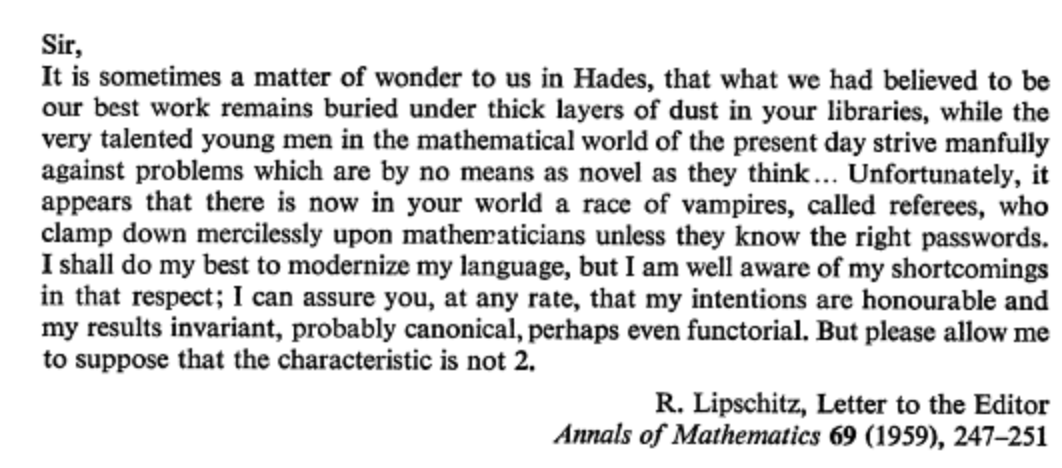Weil's paper under a pseudonym on deforming singular varieties
I think what you refer to as a pseudonymous paper is actually an anonymous note Correspondence, by XXX in Italian(!), which Weil composed in his role as an editor of the American Journal of Mathematics and published in vol. 79 (1957), 951-952. This refers back to F. Severi in 1909, but my knowledge of Italian is too fragmentary to follow exactly what Weil says here. (Probably you need JSTOR access to get this journal.)
By the way, there was another short note by Weil, this time written when he was an editor of Annals of Mathematics, under the pseudonym "R. Lifschitz". This one is in English, published in the Annals vol. 69 (1959), and also shows a mischievous side of Weil's character.
this pseudonomous letter mentioned by Jim Humphreys is too amusing not to summarize here:
R. Lipschitz (Ann. of Math. 69, 1959, 247-251)
reprinted in A. Weil, Collected Papers, volume II (Springer, 1979):

and for the record, here is a translation of the 1957 anonymous note in Italian:
A correspondent, who wishes to remain anonymous, writes as follows:
--- A very well known conjecture by F. Severi (Rend. Pal. 28 (1909), p. 45) asserts that "every variety with multiplicities in some points can be considered as the limit of one without singularities, belonging to the same space."
According to a note distributed by Nancago from "United Press" agency, this hypothesis from that famous author would have been refuted by the respectable French geometer René Thom, based on the example of cone of 3d order in the space $S_6$ and following quite delicate topological considerations.
It might not displease the readers of your esteemed journal to find here an elementary geometric treatment of Thom's example. In fact, we will determine all the varieties of 3d order in any space $S_n$. From this we will obtain, as an immediate consequence, the falseness of the hypothesis in question.
Let $V_r$ be a variety of 3d order in the space $S_n$, of dimension $r<n-1$, not contained in a hyperplane. Let $C$ be the cone that projects $V_r$ from an arbitrary simple point $M$ of $V_r$; let $M'$ be another point in $V_r$, simple in the cone $C$. The cone $C$ is of second order; hence its projection from $M'$ is a linear variety of dimension $r+1$, so that $V_r$ is contained in a linear variety of dimension $r+2$. It follows that $r=n-2$ and $C$ has dimension $n-1$. The same holds for cone $C'$, that projects $V_r$ from $M'$. The cones $C$ and $C'$ are distinct, hence $M'$ is simple in cone $C$; their intersection is therefore a reducible variety of 4th order, broken in $V_r$ and a linear variety. Let $A=0,B=0$ be the equation of this variety. Then the equations for the cones $C$, $C'$ can be written in the form $$(1)\qquad\qquad AP=BQ,\;\;AP'=BQ',$$ where we denote by $P,Q,P',Q'$ four linear forms homogeneous in the space coordinates. Let $s$ be the number of independent forms among the six forms $A,B,P,Q,P',Q'$; this number is at least 4, because, if it where 2, the cones $C,C'$ would not be reducible; if it where 3, then their intersection would be broken in four distinct or non-distinct varieties. The possible values for $s$ are therefore 4,5 and 6.
Let $L$ be the linear variety of dimension $n-2$, defined by the equations $A=B=0$, $P=Q=P'=Q'=0$. Each linear variety that projects from $L$ a point in the intersection of $C$ and $C'$ is contained in it, as one can see immediately from equations (1). Projecting $V_r$ from $L$ one therefore obtains a variety $W$ of 3d order and dimension $s-3$ in a space $S_{s-1}$; and $V_r$ is nothing else than the cone projecting $W$ from $L$. In the space $S_{s-1}$ one can take as homogeneous coordinates the $s$ independent forms out of the forms $A,B,P,Q,P',Q'$; therefore the equations (1) define a variety of 4th order, broken in $W$ and a linear variety. Now we can distinguish three cases:
(a) $s=6$: $W$ is the variety $W_3$ of Segre embedded in $S_5$, the bi-rational image without exceptions of the product of a plane and a line; as it is known, this has no points with multiplicities.
(b) $s=5$: $W$ is the hyperplane section of $W_3$. It is easy to see that all the irreducible hyperplane sections of $W_3$ are projectively equivalent among each other; denoting by $W_2$ one of these, it is also a rational variety without points having multiplicities.
(c) $s=4$: $W$ is the well known cubic rational $W_1$ embedded in $S_3$.
In this way we have demonstrated that every variety of 3d order belongs to one of the following types:
a variety of dimension $r$, contained in a linear variety of dimension $r+1$;
the three rational varieties $W_3$, $W_2$, $W_1$ enumerated above;
the projective cone of one of these three varieties from a linear variety of arbitrary dimension.
Evidently, a variety of type two or three can not be the limit of a variety of type one, and hence a variety of type three, of dimension greater than 3, can not be the limit of a variety without multiplicities in some points.